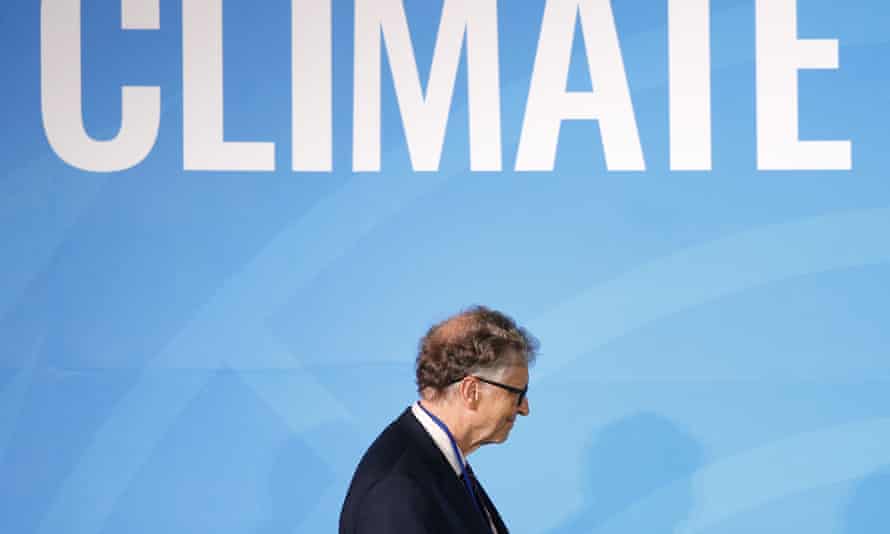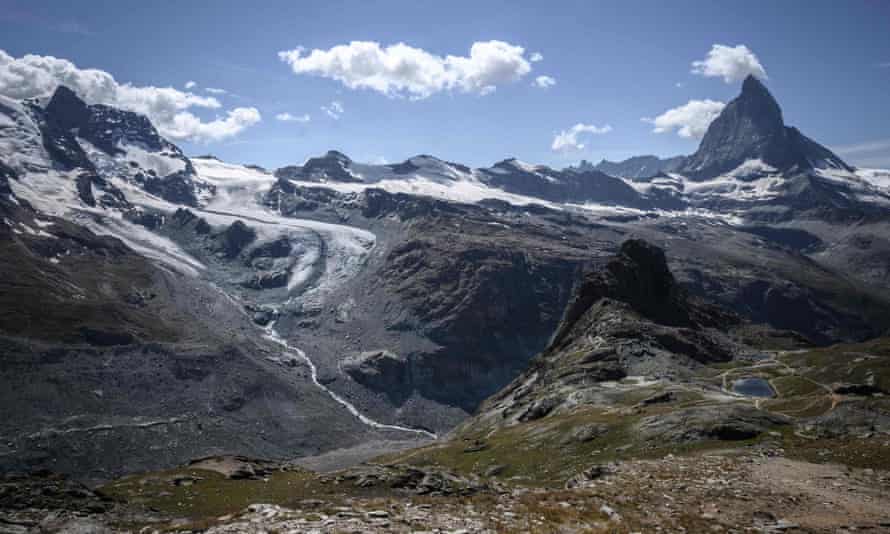What Is the Green New Deal? A Climate Proposal, Explained

 Representative Alexandria Ocasio-Cortez of New York and Senator Edward J. Markey of Massachusetts, right, announcing the resolution on Feb. 7.Credit...Pete Marovich for The New York Times
Representative Alexandria Ocasio-Cortez of New York and Senator Edward J. Markey of Massachusetts, right, announcing the resolution on Feb. 7.Credit...Pete Marovich for The New York Times
By Lisa Friedman
Feb. 21, 2019
Want climate news in your inbox? Sign up here for Climate Fwd:, our email newsletter.
If you’ve heard a lot recently about the Green New Deal but still aren’t quite sure what it is, you are not alone. After all, it has been trumpeted by its supporters as the way to avoid planetary destruction, and vilified by opponents as a socialist plot to take away your ice cream. So it’s bound to be somewhat confusing. We’re here to help.
[A Green New Deal is Technologically Possible. Its Political Prospects Are Another Question.]
What is the Green New Deal?
The Green New Deal is a congressional resolution that lays out a grand plan for tackling climate change.
Introduced by Representative Alexandria Ocasio-Cortez of New York and Senator Edward J. Markey of Massachusetts, both Democrats, the proposal calls on the federal government to wean the United States from fossil fuels and curb planet-warming greenhouse gas emissions across the economy. It also aims to guarantee new high-paying jobs in clean energy industries.
The resolution is nonbinding, so even if Congress approves it, nothing in the proposal would become law.
ADVERTISEMENTContinue reading the main story
Variations of the proposal have been around for years. Think tanks, the Green Party and even the New York Times columnist Thomas L. Friedman all have had plans for tackling climate change that they labeled a Green New Deal. But after the 2018 midterm elections, a youth activist group called the Sunrise Movement popularized the name by laying out a strategy and holding a sit-in outside the office of Nancy Pelosi, the soon-to-be-speaker of the House of Representatives, to demand action on climate change. Ms. Ocasio-Cortez joined the protesters, lending her support to their proposal and setting the groundwork for what ultimately became the joint resolution.
Will there be a vote on it?
Yes.
Republicans have cast the Green New Deal as a socialist takeover and say it is evidence that Democrats are far from the mainstream on energy issues. Mitch McConnell, the Senate majority leader, plans to bring the plan to the floor as early as next week. Democrats say that the vote would be a stunt because Republican Senate leaders do not want to have a sincere debate about climate change.
What problem is the Green New Deal addressing?
Editors’ Picks

After Genetic Testing, I Took a Chance on an ‘Imperfect’ Pregnancy

Europe Plunders Paris for Talent, and P.S.G. Pays the Price

5 Minutes That Will Make You Love Brahms

Image
 Oil refineries near Norco, La. The Green New Deal calls on the federal government to wean the United States from fossil fuels.Credit...Bryan Tarnowski for The New York Times
Oil refineries near Norco, La. The Green New Deal calls on the federal government to wean the United States from fossil fuels.Credit...Bryan Tarnowski for The New York TimesThe goal of the Green New Deal is to reduce greenhouse gas emissions in order to avoid the worst consequences of climate change while also trying to fix societal problems like economic inequality and racial injustice.
[You can get updates on the Green New Deal, and all our climate coverage, in our weekly climate newsletter. Subscribe today for free.]
ADVERTISEMENTContinue reading the main story
The resolution uses as its guide two major reports issued last year by the United Nations and by federal scientists who warned that if global temperatures continue to rise, the world is headed for more intense heat waves, wildfires and droughts. The research shows that the United States economy could lose billions of dollars by the end of the century because of climate change. Currently, carbon emissions are rising, by 3.4 percent last year in the United States and by 2.7 percent globally, according to early estimates.
CLIMATE FWD: A new administration, an ongoing climate emergency — and a ton of news. Our newsletter will help you stay on top of it.Sign Up
Supporters of the Green New Deal also believe that change can’t just be a technological feat, and say it must also tackle poverty, income inequality and racial discrimination.
READ MORE REPORTING ON THE GREEN NEW DEAL
A Green New Deal Is Technologically Possible. Its Political Prospects Are Another Question.
Feb. 21, 2019
Liberal Democrats Formally Call for a ‘Green New Deal,’ Giving Substance to a Rallying Cry
Feb. 7, 2019
What are its main provisions?
You can read it for yourself here, but here are the essential elements: It says the entire world needs to get to net-zero emissions by 2050 — meaning as much carbon would have to be absorbed as released into the atmosphere — and the United States must take a “leading role” in achieving that.
The Green New Deal calls on the federal government to dramatically reduce greenhouse gas emissions, create high-paying jobs, ensure that clean air, clean water and healthy food are basic human rights, and end all forms of oppression.
Most Read Climate and Environment Stories
How Debt and Climate Change Pose ‘Systemic Risk’ to World Economy
John Topping, 77, Dies; Early Advocate for Climate Action
What’s Good for the Ocean May Also Be Good for Business
Should We Block the Sun? Scientists Say the Time Has Come to Study It.
Tiny Town, Big Decision: What Are We Willing to Pay to Fight the Rising Sea?
To achieve those goals, the plan calls for the launch of a “10-year mobilization” to reduce carbon emissions in the United States. It envisions sourcing 100 percent of the country’s electricity from renewable and zero-emissions power, digitizing the nation’s power grid, upgrading every building in the country to be more energy-efficient, and overhauling the nation’s transportation system by investing in electric vehicles and high-speed rail.
To address social justice, the resolution says it is the duty of the government to provide job training and new economic development, particularly to communities that currently rely on jobs in fossil fuel industries.
ADVERTISEMENTContinue reading the main story
What doesn’t it say?

Image
 Senator Tom Cotton of Arkansas has said the deal would force Americans to have to “ride around on high-speed light rail, supposedly powered by unicorn tears.”Credit...Tom Brenner/The New York Times
Senator Tom Cotton of Arkansas has said the deal would force Americans to have to “ride around on high-speed light rail, supposedly powered by unicorn tears.”Credit...Tom Brenner/The New York TimesPresident Trump has claimed the Green New Deal will take away your “airplane rights.” Senator Tom Cotton, Republican of Arkansas, told Hugh Hewitt, the conservative radio host, that the proposal would confiscate cars and require Americans to “ride around on high-speed light rail, supposedly powered by unicorn tears.” And Senator John Barrasso, Republican of Wyoming and chairman of the Committee on Environment and Public Works, warned that ice cream, cheeseburgers and milkshakes would be a thing of the past because under the Green New Deal, “livestock will be banned.”
The resolution doesn’t do any of those things.
To be sure, there is some confusion about what the Green New Deal does and doesn’t say. That’s partially the fault of its sponsors, who botched the resolution’s initial rollout.
Ms. Ocasio-Cortez’s office initially sent to reporters, but later disavowed, a fact sheet that included some controversial ideas, like guaranteeing economic security including to those “unwilling to work.”
The resolution does call on the federal government to make investments in policies and projects that would eventually change the way we design buildings, travel and eat. For example: cows. To reduce methane, a powerful greenhouse gas that cows and other livestock emit, the resolution proposes “working collaboratively with farmers and ranchers in the United States to eliminate pollution and greenhouse gas emissions from the agricultural sector as much as is technologically feasible.”
The resolution itself also steers clear of endorsing or rejecting specific technologies or sources of energy, something that Mr. Markey said was done purposefully to encourage broader support for the plan.
What’s with the name?
The Green New Deal takes its name and inspiration from the major government makeover, known as the New Deal, launched by President Franklin D. Roosevelt to help the United States recover from the Great Depression.
ADVERTISEMENTContinue reading the main story
That series of public-works programs and financial reforms included the Civilian Conservation Corps (which put people to work in manual labor jobs like planting trees and constructing park trails) and the creation of the Public Works Administration to work on the construction of bridges, dams, schools and more.
Like the original New Deal, the Green New Deal is not a single project or piece of legislation.
What are the costs?
That’s not clear yet.
President Trump claimed it would cost $100 trillion. Supporters of the Green New Deal say climate change could be equally costly to the American economy. For now it’s impossible to pin down dollar figures on the plan.
Some examples of why:
One conservative think tank has pegged the cost to the federal government of providing Medicare-to-all at $32 trillion over 10 years, but supporters claimed it would actually save taxpayers $2 trillion over 10 years.
Converting the country to 100 percent clean power? In Vermont alone, which has a goal of achieving 90 percent renewable energy by midcentury, the cost is estimated at $33 billion. Yet the state is seeing job growth in clean energy sectors and expects the transition will spur cost savings for consumers.
Modernizing the electrical grid across the United States could cost as much as $476 billion, yet reap $2 trillion in benefits, according to a 2011 study issued by the Electric Power Research Institute.
Ms. Ocasio-Cortez has acknowledged that the Green New Deal is going to be expensive, but contends the plan will pay for itself through economic growth.
ADVERTISEMENTContinue reading the main story
Do critics offer alternative proposals?
Some Republicans have called for a technology-oriented solution to climate change, but so far no critic has come out with an alternative that matches the scale or scope of the Green New Deal.
How will the Green New Deal shape the debate?
There is going to be a lot more political jockeying around the Green New Deal in coming weeks and months. Republicans have already launched video ads trying to tie Democrats to the proposal, which they have described as “radical.”
And Mr. McConnell’s vote is directly aimed at making life uncomfortable for Democratic presidential contenders like Kirsten Gillibrand, Cory Booker, Elizabeth Warren, Amy Klobuchar and Kamala Harris. Those senators have all co-sponsored the Green New Deal resolution but in some cases have avoided specifics. Ms. Klobuchar, for example, told CNN she saw the Green New Deal as an “aspiration” and “something that we need to move toward.”
At the same time, all of the attention on the Green New Deal has put new pressure on Republican critics to come up with their own plan for cutting greenhouse gases.
It is likely that the Green New Deal will remain a lightning rod throughout the 2020 presidential campaign.
For more news on climate and the environment, follow @NYTClimate on Twitter.
Lisa Friedman reports on federal climate and environmental policy from Washington. She has broken multiple stories about the Trump administration’s efforts to repeal climate change regulations and limit the use of science in policymaking. @LFFriedman
More in Science





